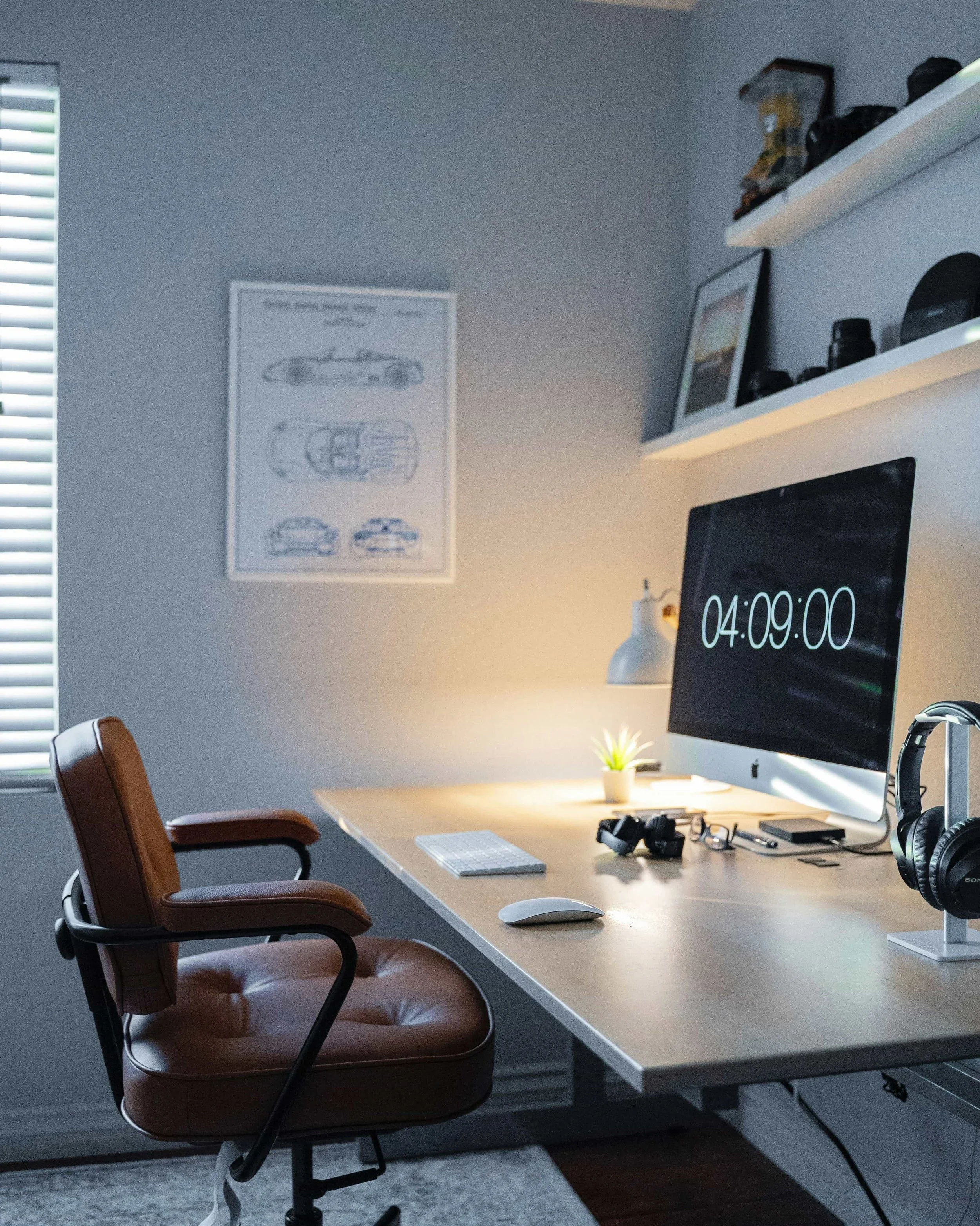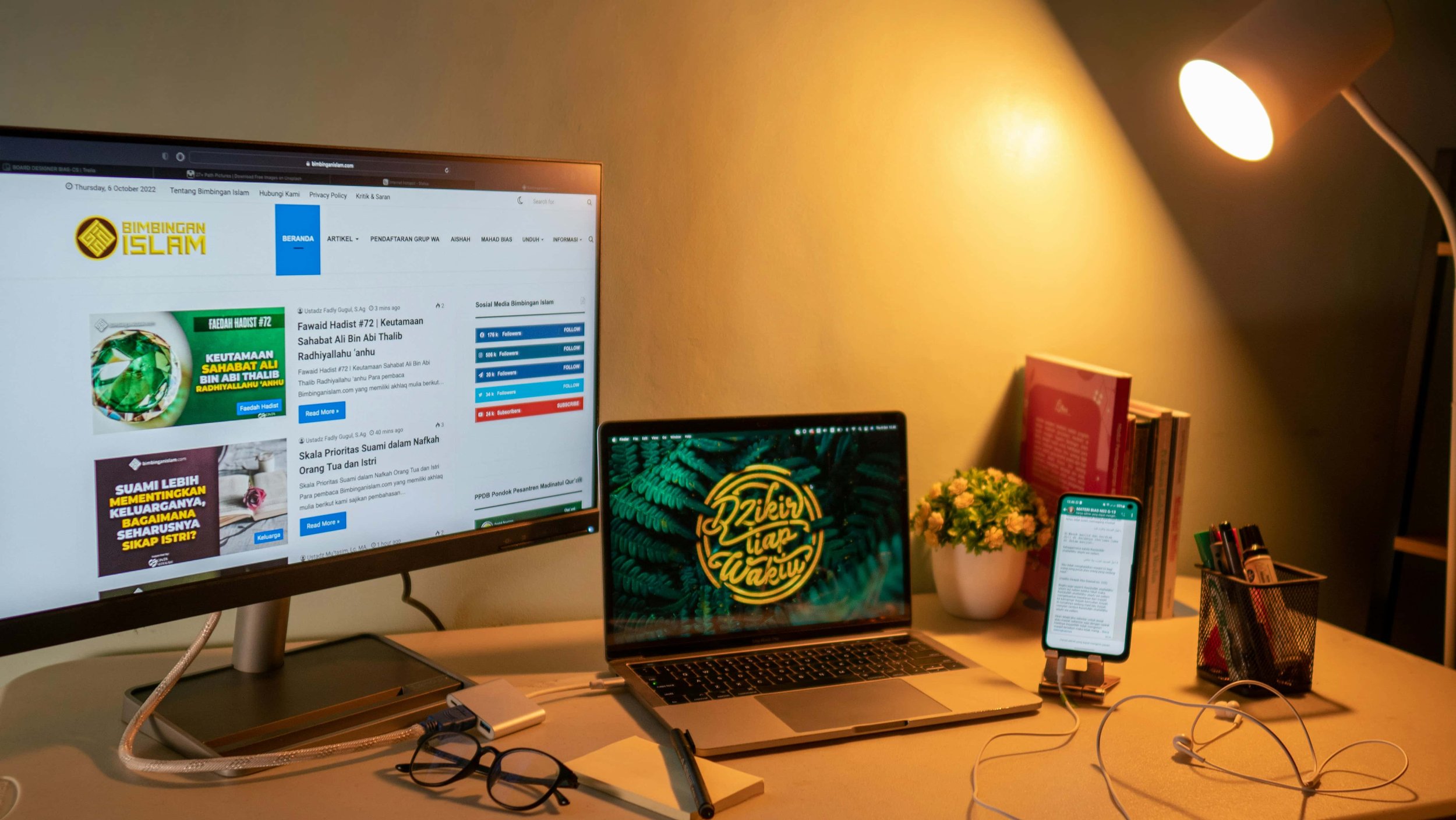How to Choose the Right Desk Lamp for Your Home Office
A good desk lamp does more than brighten your work surface. The right lamp helps you focus, reduces eye strain, and sets the tone of your workspace - all of which affect productivity and comfort. Good home office lighting balances brightness, color temperature, and placement so your eyes aren’t working overtime and your brain can stay alert when it needs to and unwind when it doesn’t.
Studies show that lighting choices influence cognitive performance and mood. Color temperature, brightness, and light quality can all make the difference between feeling energized or fatigued at your desk.
Why Your Desk Lamp Matters for Productivity, Mood, and Eye Comfort
Boosts alertness and focus
Higher color temperatures (cooler light) during the day can make you feel more alert and improve concentration. This is especially helpful for mentally demanding work.
Reduces eye strain
A properly positioned desk lamp reduces the contrast between your screen and the surrounding area, which can help prevent digital eye strain during long hours of computer use.
Supports healthy routines
Bright, blue-enriched light during the day can support alertness, while warmer light in the evening helps you wind down and prepare for rest.
What to Look for in a Desk Lamp
When shopping for a desk lamp, consider these key features. If you’d like specific recommendations, check out our 10 Best Desk Lamps for Home Offices.
1. Brightness (Lumens) and Desk Illuminance (Lux)
Lumens measure total light output, while lux measures how much light reaches your desk. Aim for 300–500 lux for most computer and paperwork tasks, and up to 750 lux for detailed, precision work. A dimmable lamp lets you adjust to different needs.
2. Color Temperature (Kelvin)
Desk lamp color temperature is important because the light it emits affects your mood, alertness, and focus
Warm (2700–3500K): Cozy, relaxing - good for evening use.
Neutral (3500–4000K): Balanced for general work.
Cool (4000–6500K): Crisp, energizing - great for daytime focus.
3. Color Rendering Index (CRI)
A higher CRI means colors look more natural. Aim for CRI 80+, and if you work with design or color-sensitive tasks, go for CRI 90+.
4. Adjustability
An adjustable arm or head allows you to direct light exactly where you need it, reduce shadows, and minimize glare.
5. Dimming and Controls
Smooth (continuous) dimming offers finer control than stepped settings. Some lamps have memory functions or sensors that adjust light automatically.
6. Glare Reduction and Diffusion
Look for shades, diffusers, or indirect light designs that prevent harsh reflections on your monitor or glossy surfaces.
7. Mounting Style
Clamp mount: Saves desk space, ideal for small workstations.
Weighted base: Portable and easy to reposition.
8. Extra Features
USB or wireless charging ports for convenience
Cordless operation for flexibility
LED efficiency for long life and lower energy costs
Lighting Tips for Using Desk Lamps Effectively
Position it to your side
If you’re right-handed, place the lamp on the left; if you’re left-handed, place it on the right. This reduces shadows while writing.
Layer your lighting
Combine ambient lighting (like ceiling or wall lights) with your desk lamp. This reduces contrast between your screen and surroundings, helping to prevent eye strain. For more ideas, see our full guide to home office layered lighting.
Avoid direct screen glare
Angle the beam so it lights your work area without reflecting on your screen.
Use warmer light in the evening
Switch to a warmer color temperature or lower brightness later in the day to help your body wind down.
Pairing Your Desk Lamp with the Right Layout
Even the best desk lamp can’t perform well if your desk layout is working against it. Position your desk to take advantage of natural light, but use blinds or curtains to control glare. Make sure your lamp complements your monitor placement and other task lighting.
For more on arranging your space for maximum comfort and productivity, check out our guide to the Best Lighting Layout for a Home Office.
Common FAQs
What color temperature is best for a desk lamp?
Cool white (4000–5000K) is ideal for daytime focus, while warm white (2700–3500K) is better for evening relaxation.
How bright should my desk lamp be?
Aim for 300–500 lux on your work surface for most tasks, with higher brightness for detailed work.
Does a desk lamp help reduce eye strain?
Yes — when positioned correctly, a desk lamp can reduce contrast and glare, easing strain on your eyes.
Which is better: clamp or base?
Clamp mounts save space; weighted bases are easier to move. Choose based on desk size and flexibility needs.
Are LED desk lamps better?
LEDs last longer, use less energy, and produce consistent light — making them the most practical choice for most home offices.
Final Tip: The right desk lamp is more than a light source — it’s a productivity tool, a mood setter, and a key part of your home office ergonomics. Choose one with the right balance of features, and you’ll feel the benefits every workday.




